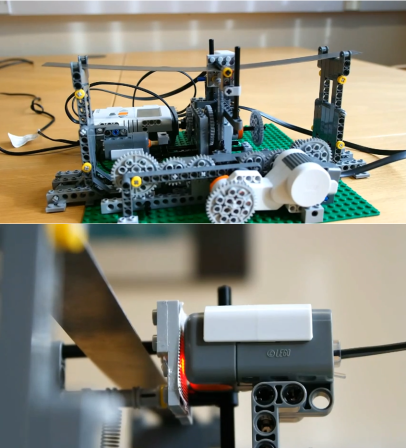
[Dane] decided he wanted to make a rather large electric scooter, capable of taking him through even the most inclement weather — that’s right, even snow.
Well, after about 18 months of stop and go work it is finally complete — for now. It features an impressive 7kW brushless 3-phase motor, a massive lithium ion battery pack and more custom parts then you could shake a stick at!
The frame started out as one of those big push scooters from the 80’s, in fact, it is the same as the one shown in Macklemore’s Thrift Shop video (pic)! But since then it has had many a modification done to it — it looks as though the front end is the only part that wasn’t touched!
He’s got an incredible build log his website, so if you want to build your own (you will once you’ve seen the video after the break), it’s a great starting point.





 Learning with visuals can be very helpful. Learning with models made from NXT Mindstorms is just plain awesome, as [Rdsprm] demonstrates with this
Learning with visuals can be very helpful. Learning with models made from NXT Mindstorms is just plain awesome, as [Rdsprm] demonstrates with this 









